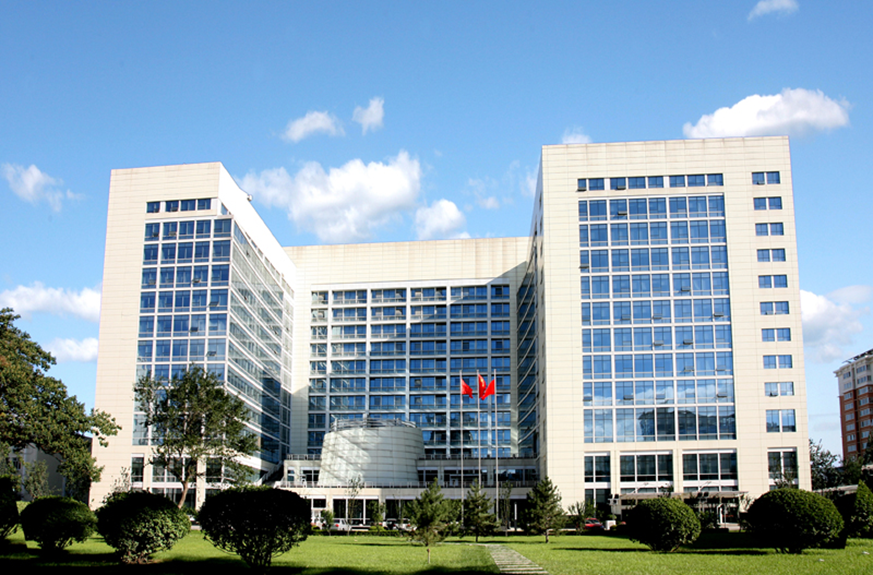
To echo the resolution of the United Nations General Assembly on international cooperation in the peaceful uses of outer space, the World Weather Watch (WWW) Programme was proposed at the 14th session of Executive Council (EC) of the World Meteorological Organization (WMO) in June 1962 and approved by the 5th World Meteorological Congress in April 1967. WWW Programme aims to establish the Global Observing System, Global Telecommunications System and Global Data Processing and Forecasting System (GDPFS), in which GDPFS constitutes its core of global meteorological operational system.
GDPFS is structured at three tiers: World Meteorological Centres (WMCs), Regional Specialized Meteorological Centres (RSMCs) and National Meteorological Centres (NMCs), which fulfil the required functions at the global, regional or national level respectively. WMCs and RSMCs must be designated by WMO, while NMCs may be established by WMO Members themselves.
From 1967 to 2017 before EC-69, WMO only designated three WMCs in Moscow, Washington and Melbourne, 25 RMSCs with geographical specialization, 16 RMSCs with activity specialization, 12 Long-range Weather Forecast Centres and 6 Regional Climate Centres. In May 1979, China’s National Meteorological Centre was first designated by the 8th World Meteorological Congress as a RMSC with geographical specialization. Since then, China has become a host to nearly 20 WMO’s specialized centres with different functions.
On 17 May 2017, EC-69 endorsed the designation of China Meteorological Administration (CMA) as a World Meteorological Centre(WMC), which is a clear recognition of China’s world-leading forecasting capabilities. The designation also underscores the leading and major role that China plays in worldwide meteorological operation and technical exchanges, and enhances the visibility, influence and contribution of China in the world arena.

WMCs encompass the core institutions of WMO’s global operational meteorological forecast and prediction. They are mandated to provide stable, rich and high-quality guidance products on seamless weather analysis, forecast and prediction, and to lead the international exchanges and training on weather forecast techniques.
There are 8 WMCs around the world. The WMCs in the United States, Russia and Australia were designated at the 5th World Meteorological Congress in 1967. In addition to China, the European Mid-term Weather Forecast Centre and centres in the United Kingdom, Canada and Japan were also endorsed as WMC at EC-69 in 2017, however, the WMC in China is the only one based in developing countries.
On 16 January 2018, CMA Headquarters awarded the plaque of the "World Meteorological Centre (Beijing)" to the National Meteorological Centre (NMC, also known as Central Meteorological Observatory). NMC will work with the National Climate Centre, National Satellite Meteorological Centre, and National Meteorological Information Centre to fulfill the WMC’s functions and translate the Chinese meteorological vision of “monitoring, forecasting and servicing globally” into practice.
The World Meteorological Centre in Beijing (WMC-Beijing) is committed to:
a) Improving global numerical weather prediction (NWP). Aiming at the global leading centres, WMC-Beijing will continue to develop GRAPES global, regional and ensemble NWP system with complete independent intellectual property rights, and the specialized NWP systems for typhoons, sandstorms and nuclear pollution. It will establish a sub-seasonal-seasonal-interannual climate prediction system to accelerate the integration of weather and climate numerical prediction systems.
b) A global satellite product system. WMC-Beijing will develop, based on the available satellite data analysis and application around the world, a global air-ocean-land satellite product system, which mainly consists of FY-3 and FY-4 series of meteorological satellites, but also includes domestic (e.g., Gaofen satellites) and foreign satellites, and is supplemented by ground-based real-time observations.It will also set international standards for relevant satellite data products, and enhance the application of meteorological satellite data and products in the NWP data assimilation, 24×7 severe weather surveillance and related catastrophic environmental event surveillance and assessment, nowcasting analysis and warning, public visual and perception product services.
c) A high-speed meteorological data exchange center. Relying on the existing WIS/GISC (Beijing) Center, WMC-Beijing aims to establish a global exchange and collection mechanisms for various types of observations, forecasts, and related data in order that large-volume data such as NWP products and satellite remote sensing products can be collected and distributed in real-time and high-speed manner, and high-frequency data such as various types of severe weather warning can be shared in real time.
d) A global seamless forecasting system. WMC-Beijing attempts to put the concept of WMO's seamless global data processing and forecasting system into practice. It will extend its fine-gridded forecast, climate prediction and specialized products to global terrestrial and marine area, and develop them into a minute-to-year seamless global forecasting system. WMC-Beijing will follow WMO‘s concept of risk warning and impact-based forecast and take use of China’s strength on meteorological disaster prevention and mitigation and special meteorological services in transforming its weather forecast into impact-based forecast. It will further enhance its forecasting capabilities and accuracy for severe weather and climate events, including typhoons, heavy rain, drought, flood, strong convective weather, dust storms and El Nino.
e) Building a large-scale regional consultation platform. WMC-Beijing will use the cutting-edge Internet technology to establish an online regional weather consultation platform that can be accessed by multiple countries and users in real time. In other words, with fast and smooth audio, video and data exchanges, a stable regional weather forecasting technical consultation mechanism and emergency response mechanism can be set up among countries. WMC-Beijing will work with WMO to provide relevant operational and expert advisory support for the United Nations international rescue, crisis management, emergency response and humanitarian assistance.
f) An international exchange mechanism for weather forecasting and service. WMC-Beijing will engage with and contribute to the forecasting and service activities sponsored and organized by WMO. It sets up an International Desk on Severe Weather Forecast on the top of MICAPS. Young forecasters from less developed regions are invited to receive hands-on operational training at this Desk. In addition, NWP product application training is regularly launched for forecasters from less developed regions in the world, and operational forecasting techniques exchange events in its own region have also been held on a regular basis to promote the application of operational techniques.